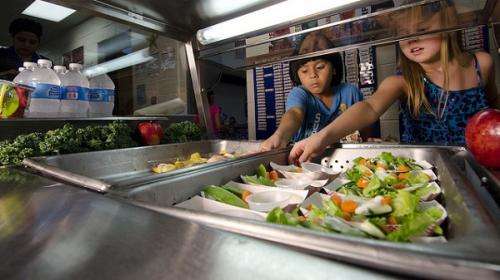Nutrition literacy needs cross-curriculum learning

Poor diet is a major contributing factor to increasing obesity, diabetes, hypertension and other chronic illness.
Thirty to forty per cent of total energy consumed by Australians is from 'discretionary foods and drinks'; items low in nutrients but high in energy, saturated fats, sugars, salt and/or alcohol.
These displace healthier foods such as fruit, vegetables, lean meats, milk and grains that should form most of the diet.
Poor diet is increasingly evident even amongst young children when lifelong eating habits are forming. So any attempt to halt or even reverse this trend should commence in childhood.
One way to help children develop healthy eating habits is to embed nutrition literacy into the entire school curriculum.
Nutrition literacy requires not only knowing about the nutrition and health aspects of food but also development of practical skills, knowledge and attitudes that promote healthy food choice and consumption.
This knowledge and skills includes knowing how to access reliable nutrition information, choose quality foods, plan meals, develop a food budget, grow or buy foods and prepare healthy meals.
Nutrition lessons available through various subjects
While currently students learn about nutrition in home economics and health classes, it is possible to include these concepts in a range of learning areas.
For example, students could measure portion size and calculate energy density of foods in maths class.
In science they could examine the properties of fats, sugars and salt and their effect on the human body; or the properties of soils for food production.
In geography they could study what food crops grow in different climates, and in history, how food production and marketing has changed through the ages.
In English and the arts there is scope for review and creation of literary and visual works and media that focus on aspects of food.
The advantage of embedding nutrition concepts into existing classes is that it can enhance rather than take time away from other areas of the curriculum.
Learning English, maths and science is made more relevant when applied to daily life skills.
New curriculum resources available
ECU's Child Health Promotion Research Centre has developed a new program and website called Refresh.Ed, to provide resources and professional learning materials to encourage teachers to embed nutrition concepts
across the curriculum.
Funded as part of the WA Government's Healthy Children's Program, Refresh.ED has material for teachers from kindergarten to Year 10 and covers the learning areas of maths, science, English, health and technology.
Many children are not exposed to growing, buying, preparing or eating fresh, healthy food at home, so providing this opportunity at school is a critical aspect of their education.
The more we can give children enjoyable experiences with nutritious food, the better chance we have of inspiring them to make healthy food choices in the future.
The added benefit of targeting school children is that they are likely to take what they learn at school home.
In this way they become "nutrition ambassadors" and can help encourage their entire family to start eating better.















